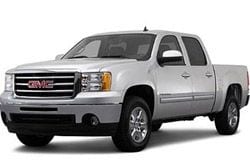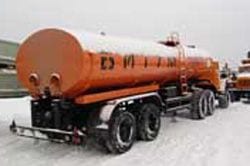
It's time to change tires. Snow coming soon (video)
 Car owners went to workshops to change summer tires for winter ones. Although recommended, the driver is not required to make such a change under Polish law.
Car owners went to workshops to change summer tires for winter ones. Although recommended, the driver is not required to make such a change under Polish law.
According to a TNS Polska study commissioned by Michelin Polska, almost half of drivers (46%) change tires depending on the specific month, not the weather. So, 25% of respondents point to October, 20% to November, and 1% to December. In addition, 4% of drivers believe that winter tires should be started at the first snowfall, which, according to experts, is definitely too late. Only 24% of respondents give the correct answer, i.e. replacement of tires when the average temperature drops below 7 degrees C.
According to experts, the main difference between a summer tire and a winter one is the composition of the tread rubber compound. A summer tire hardens at a temperature of about 7 degrees above zero, losing its properties - traction worsens. The lower the air temperature, the stiffer the summer tire becomes. Due to the special structure of the tread, the winter tire remains flexible at low temperatures, and the use of notches in its structure - sipes - allows it to "cling" to snowy and slippery ground. The benefits of the popular winter tire are best appreciated in difficult weather conditions, on snowy and icy roads. Particularly important is the longer braking distance compared to a summer tire under the same conditions.
The editors recommend:
Rejection report. These cars are the least problematic
The reverse counter will be punished by prison?
Checking whether it is worth buying a used Opel Astra II
Police statistics show that many drivers are unaware of the impact tires have on road safety. There can be many reasons for tire problems. The most common ones include poor tread condition, incorrect tire pressure and tire wear. In addition, the selection and installation of tires may be incorrect.
The condition of our tires is especially important in difficult weather conditions - wet, icy surfaces, low temperatures. Therefore, in winter, most drivers change tires to winter ones. Although there is no such obligation in Poland, it is worth remembering that tires adapted to winter weather conditions provide much better grip and control over the car.
A worn out tread reduces the vehicle's grip on the road. This means that it is easier to skid, especially in corners. The minimum tread depth allowed by EU law is 1,6 mm and corresponds to the TWI (Tread Wear Indicato) tire wear index. For your own safety, it is better to replace a tire with a tread of 3-4 mm, since tires below this indicator often behave poorly.
Equally important is the correct level of tire pressure. You should check it at least once a month and before you travel. Incorrect pressure affects vehicle handling, traction, and operating costs because combustion rates are much higher at low pressures. In this case, the car will “pull” to the side even when driving in a straight line, and when cornering, the effect of swimming will appear. Then it is easy to lose control of the car.
In case of unsatisfactory condition of the tires of the vehicle, the police have the right to punish the driver with a fine of up to PLN 500 and confiscate the registration certificate. It will be available for collection when the car is ready to go. – The condition of the tires should be checked regularly. As soon as we feel the vibrations or the "withdrawal" of the car to one of the sides, we go to the service. Such anomalies may indicate poor tire condition. In this way, we can avoid not only a high fine, but, above all, dangerous situations on the road, explains Zbigniew Veseli, director of the Renault driving school.

